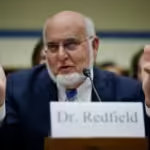A concerning trend against sunscreen is gaining momentum on platforms like TikTok, falsely linking its use with cancer. Social media influencers are at the forefront of this movement, spreading misinformation that could endanger public health.

The Rise of Anti-Sunscreen Advocacy
In recent months, a troubling wave of anti-sunscreen rhetoric has flooded social media, with influencers advocating against its use. This movement promotes several unfounded claims about sunscreen’s alleged role in causing cancer and minimizing the risks associated with sun exposure.
According to Glam, an analysis of Google Trends data reveals a sharp increase in searches related to sunscreen and cancer associations, including inquiries about whether the sun or sunscreen itself can cause cancer. This surge in misinformation has left many questioning the safety and efficacy of sunscreen products.
Debunking the Myths
To address these concerns, experts have stepped forward to debunk four prevalent myths perpetuated online.
Myth 1: Sun Doesn’t Cause Cancer
Dr. Dino Prato from Envita Medical Centers emphasizes that extensive research links sun exposure to skin cancer. Ultraviolet (UV) radiation damages skin cell DNA, leading to mutations that can develop into cancer over time.
Dr. Susan Massick of The Ohio State University Wexner Medical Center explains that UV exposure triggers inflammation and cell damage, visible as sunburns. Over time, these damaged cells may become cancerous without proper protection.
Dispelling Falsehoods About Sunscreen
Despite claims that sunscreen use itself contributes to cancer, Dr. Gary Goldenberg clarifies that using sunscreen in combination with other protective measures actually reduces the risk of skin damage and cancer.
Myth 2: Sunscreen Increases Cancer Risk
Contrary to popular belief, wearing sunscreen does not increase the likelihood of skin cancer. It acts as a shield against harmful UV radiation, reducing the incidence of precancerous skin lesions.
Myth 3: Rise in Skin Cancer Due to Sunscreen Use
Dr. Goldenberg dismisses the notion that increased sunscreen use in the late 1970s caused a rise in skin cancer diagnoses. Instead, factors like aging populations, heightened sun exposure during leisure activities, and improved diagnosis methods contribute to the upward trend.
Myth 4: Mineral vs. Chemical Sunscreen Safety
Both mineral-based (containing zinc oxide or titanium dioxide) and chemical-based sunscreens are safe for use. Dr. Massick notes that mineral sunscreens physically reflect UV rays, while chemical ones absorb them. Individuals with sensitive skin may prefer mineral options due to less potential for irritation.
Choosing the Right Sunscreen
When selecting sunscreen, prioritize those with higher zinc oxide or titanium dioxide content for better UV protection. Look for broad-spectrum formulations that shield against both UVA and UVB rays, and opt for water-resistant products with SPF 50+. Always check expiration dates and avoid sunscreens containing oxybenzone or octinoxate, which can harm marine ecosystems.
Additional Sun Protection Tips
In addition to sunscreen, protect yourself by seeking shade, wearing UPF clothing, hats, and UV-protective sunglasses, especially during peak sun hours. Regular skin checks with a dermatologist and a diet rich in antioxidants further support skin health and overall well-being.
Conclusion
As misinformation spreads rapidly on social media, it’s crucial to rely on expert-backed information when making decisions about sun protection. By debunking these myths and emphasizing the importance of sunscreen, we can promote safer practices and reduce the risk of skin cancer in our communities.








